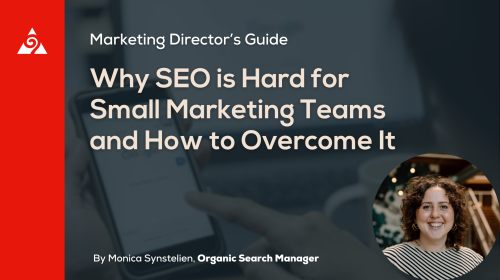Your Guide to Creating a Bulletproof Website Migration SEO Strategy
A website migration is one of the most challenging tasks to complete. From discovering the nuances of transferring from one platform to another, to minimizing the loss of severe SEO traffic; a site migration risk mitigation plan must effectively cover a multitude of components.
However, one of the most overlooked aspects of a site migration is SEO.
- How will you migrate your website without losing a significant amount of traffic?
This question can be answered with the following proven SEO-focused website migration steps.
SEO Website Redesign Steps
The following SEO website redesign steps are designed to keep traffic losses to a minimum during a website migration.
Step #1 — Discovery
During the discovery phase, the entire website migration plan should be outlined, including the details of the redesign process. Additionally, the discovery phase is a time to:
- clearly establish migration milestones
- expected deliverables
- specific roles of each person involved
By the end of the discovery phase every person involved in the website migration should have a clear understanding of their role(s), as well as the actual website migration plan.
Step #2 — Current Site Research
It’s hard to complete a successful website migration without first conducting the proper research. During step two, the current website should be audited for SEO risk and opportunities. The audit should explore:
- how a website migration will affect current SEO performance
- strengths and weaknesses of the SEO plan should be analyzed so the new site can be ready to accept high volumes of visitor traffic as soon as it goes live
- the current website should also be audited for SEO opportunities
Whether it’s restructuring the new website to have an improved hierarchy that focuses on SEO or rethinking what content should exist on the new site, identifying opportunities will help to mitigate the SEO risk during the actual migration.
Step #3 — Design and Development
If you want to increase the number of website visitors, then you need to ensure that the technology, code, and website design allow SEO to flourish. To do this, keep the following factors in mind:
● Ease with which search engines can crawl and index the site
● User friendly design
● Structured data such as Schema.org
● Website design, including its hierarchy and site navigation features
● Avoiding code bloat
Step #4 — Redirect Strategy
Sending clear signals to both search engines and website visitors is probably the most critical step to retain organic search traffic during any website migration.
During this step you must make it incredibly clear where all pages and files have been moved. Don’t forget to also tell search engines where your archived and non-public facing pages have been moved.
One of the easiest and most effective ways to tell search engines and visitors where your pages and files have been moved is through a 301 redirect.
Generally speaking, the 301 redirect sends a stronger signal to search engines, which tells them that the move is in fact permanent. Google has recently stated that 302s will also preserve link equity like 301s, but take this with a grain of salt. We still strongly recommend 301s until more testing validates what Google has stated.
The redirect strategy is what will help increase the probability that your website will maintain normal organic traffic and rankings during and immediately following the migration.
Step #5 — Test Staging Site
Before you launch your new site, you will need to thoroughly test it to ensure that the redirects work properly, the design is properly executed on, and the development is completely finished.
During the testing stage it is a good idea to block search engines from accessing the staging site. By blocking access to search engines, you prevent sending a massive amount of confusing signals caused by duplicate content . You will also want to use this time to prepare the sitemap and files for your new website; the more that you can finish before a website launch the better.
Step #6 — Launch
The website launch can be a nerve wracking stage; however, if you have thoroughly completed the proceeding steps, then you shouldn’t be too worried.
During this stage you want to make sure that the search engines are effectively crawling and indexing your new site. If the search engines can’t properly index your site, then your website’s organic traffic can be negatively impacted. For example, if there’s issues with redirects, you might notice severe drops in traffic because the old URLs were not redirected properly. Losing link equity will be inevitable during big site migrations so it’s a great idea to bridge that gap with social media, contacting company partners, PPC and many others to further encourage existing or targeted potential customers to visit your new site.
Step #7 — Measurement
After your site has been successfully migrated, you will need to measure how it performed before and after launch. Failing to do so will make it extremely difficult for you to effectively measure the risk you’ve mitigated and move forward with confidence.
You should gather insights on the following factors
● Number of website visitors
● Site ranking(s) for your top organic keywords
● Site speed (especially how it is impacted by high site traffic)
● How the website has been indexed
It’s important to note that the aforementioned measurements should also have been gathered for the previously existing site.
Choose The Right Resources To Implement A Website Migration
Successfully completing a site migration risk mitigation is a tricky task that requires proper planning and correct allocation of resources. A proven external partner or agency can help you to successfully complete your website migration, while simultaneously retaining valuable SEO traffic throughout the entire process.
To learn more about how to complete a website design with proper SEO tactics, contact us today!










